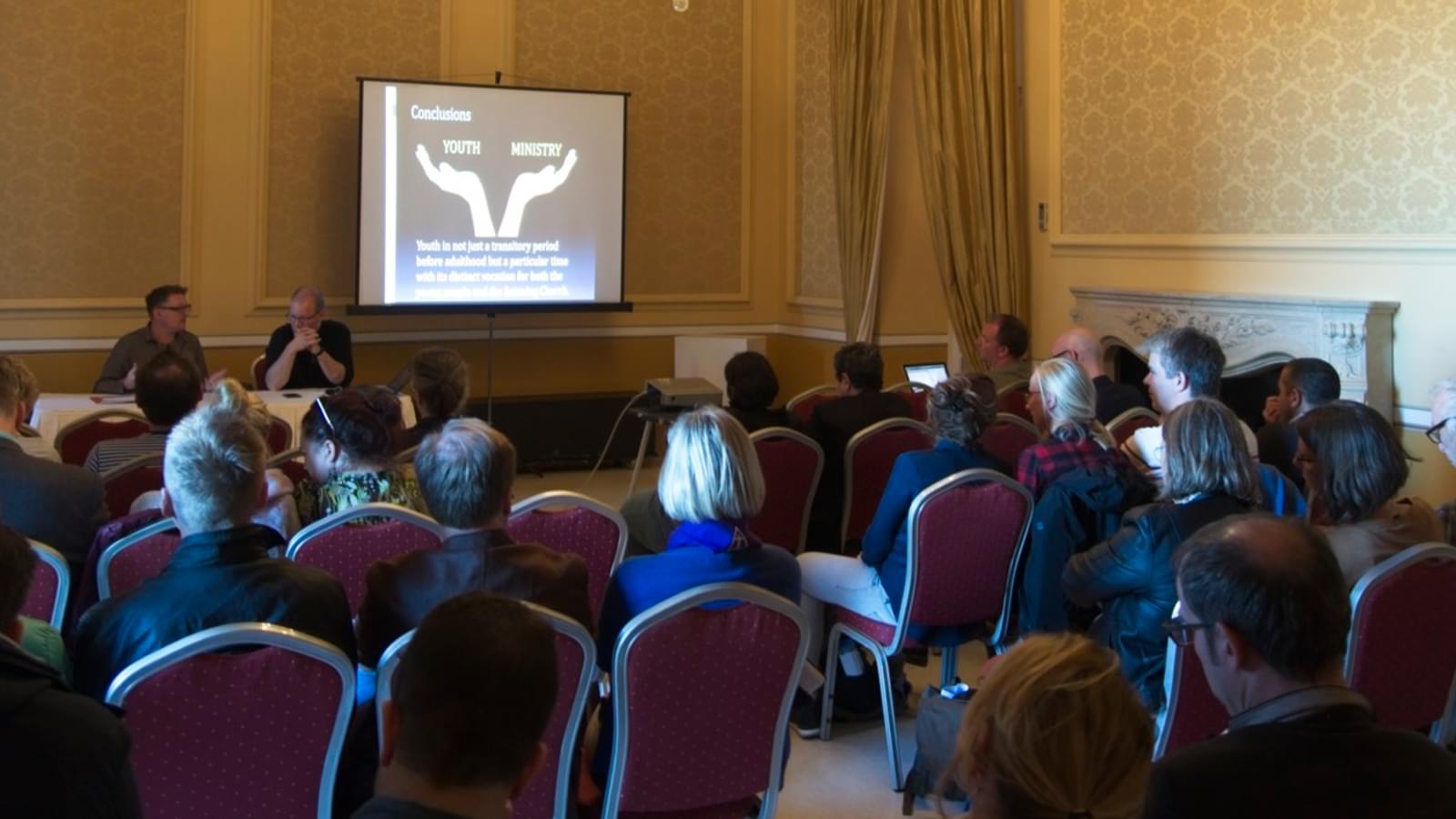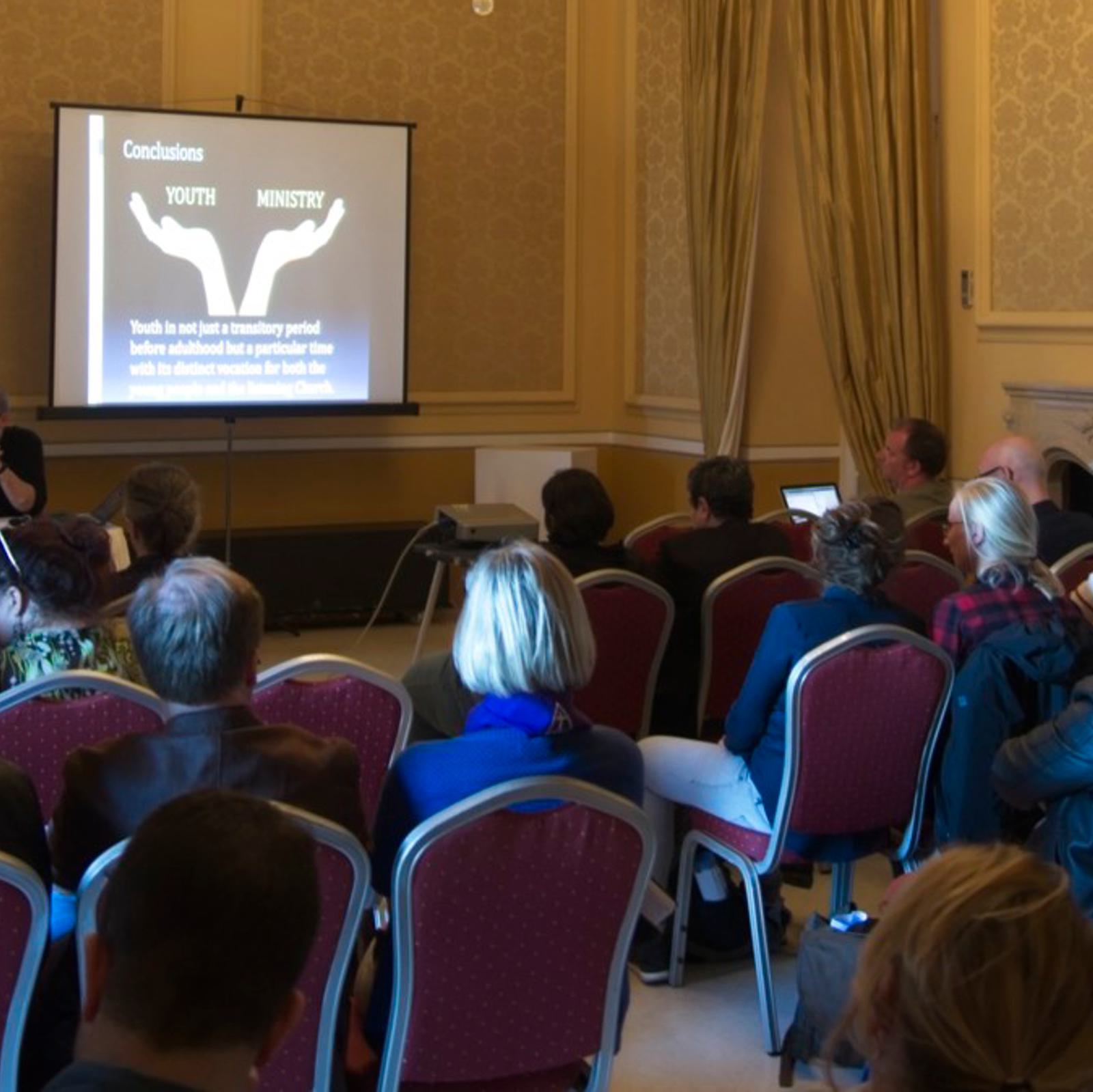As the New Year dawned and the mince pie supplies were dwindling, Gemma from our Research Team headed up to Manchester to join the ‘family’ that is the International Association for the Study of Youth Ministry (IASYM) as they gathered for their bi-annual conference. Read on to hear more about the Association and their latest research…..
“It was my first visit to an IASYM event but it definitely won’t be my last! It was a deeply reflective and intellectually stimulating programme, with global perspectives and a breadth of theological views. Coming from a past life spent in a very different academic discipline, the lack of hierarchy amongst members and the warmth shown to newcomers was a welcome change from the intimidating, large scale events I had attended as a PhD student a couple of decades ago. But there was no sense that this relaxed approach resulted in a compromise on academic quality, the papers presented each stimulated thoughtful and considered debate.
The theme of the conference was ‘A Time and Place for Youth Ministry’ and papers were invited to engage with notions of time and place related to our understanding of Youth Ministry e.g. What can we learn from the past, how do we relate to the present, where are we headed into the future and what are we grappling with in local and global contexts? I’m going to attempt to pull out some of the key ideas and questions that I came away with and leave them here for further ruminating!
Rediscovering the role of place in Youth Ministry
The opening keynote by František Štêch took us on a journey through time and place. He suggested that our approaches to youth ministry are largely time-based, our programmes are designed around young people’s developmental stages and inner personal salvation and we can often try to replicate practice models without properly considering their context. It is after all
“only in places and their transformation we can observe how time passes.” (Štêch)
Where something happens is as important as how it happens. Living a life filled with faith means reading maps and walking through landscapes looking for signs of faith. As we navigate this landscape maps might inform us but it’s experience that shapes us. We are part of and can also impact that landscape; as faith bubbles up in us we can overflow, like lava in a volcano and change the nature of the place around us. We both are and create signs of faith. Recent research from the Springtide Institute in the USA suggests that young people’s experience of the sacred occurs mostly outside of the places we might think they should be occurring e.g not in church or traditional religious spaces.
So what does it mean to think about young people as signs of faith or to notice the signs of faith they are creating? How do we help young people to develop ‘sacred sensibility’?
Learning from diverse perspectives
From research into trauma-informed youth ministry in the US to climate change activism in South Africa and from post-confirmation leadership in Norway to hearing Australian young people’s faith narratives, the conference provided evidence of the breadth of research within the IASYM. It was clear that this international community sharpens each other through their sensitive questioning and thoughtful debate. The way sessions were conducted left me wishing that more church services allowed opportunity for shared reflection and questioning of the speaker after the sermon!
So it was particularly interesting to hear Beth Corrie describe how deliberative dialogue (not to be confused with discussion or debate) could be used to help young people develop mature faith. We would all likely agree that our theology informs how we act, but how often is this what Beth refers to as ‘embedded theology’, shaped by our communities and families rather than that formed as the result of critical reflection. She argues that the use of deliberative dialogue in youth ministry, i.e. helping young people to make informed decisions about what to believe and how to act, through deliberation with others who have a different embedded theology to their own could be a valuable tool in helping overcome the polarisations in our world. With 45% of young people saying they feel their generation is more divided in 2023 than the year before (Prince’s Trust Natwest Youth Index 2024) this practical tool may be useful in helping young people learn empathy and understand the impact their beliefs can have on their behaviours.
Whilst deliberative dialogue is an established practice used in public policy research (not just a way to describe a thoughtful conversation!), Beth’s emerging research is in the early stages, further work remains to be done to measure the impact of her tools in youth ministry. But the principles of bringing diverse groups of young people together to deliberate across their differences sounds to me to be a welcome beacon of ecumenical hope in our increasingly polarised world (and Church).”
Are there ways you are already applying these or similar principles in your youth ministry? Where can you do more to help young people bridge some of the divisions in your community and in the wider world? Could deliberate dialogue have a role in your context?
There’s more to come….
Come back next week for the second half of this blog where we’ll be exploring some of the papers that help us to learn from young people and learn from the past.
References:
Corrie, B (2024) Deliberating Theology with Youth: A Method for Teaching Peace within Polarized Contexts. An Emerging Research Paper
Štêch, F (2024) Spatiality, Theology and Youth Ministry.
Both presented at The IASYM Bi-Annual International Conference in Manchester 3-6 January 2024




